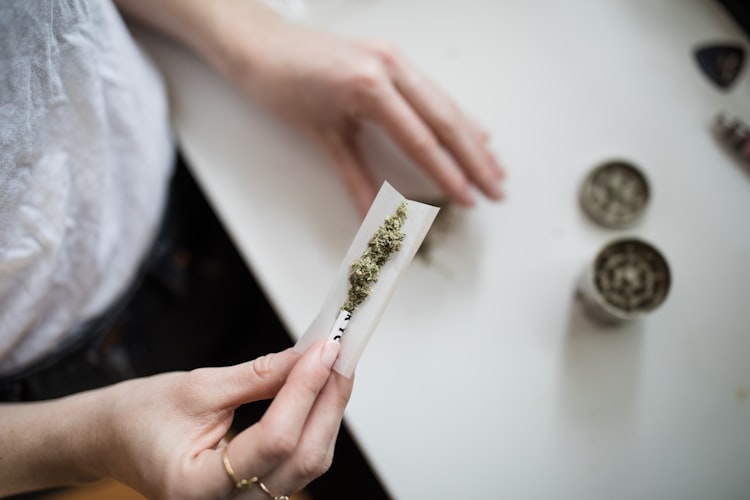Thailand is set to become the most pro-cannabis Country in Asia
In Thailand, the seeds of a cannabis awakening are beginning to grow as restrictions on the plant lessen.
While the country has been one of America’s biggest allies when it comes to the War on Drugs, the conservative military-run nation is beginning to peel back the harsh anti-pot laws and opening the doors to medical research.
Thailand has a long history with the plant, where the words “bong” and “ganja” originated, which is also very much intertwined with our own American history with the plant. In December, it became the first country in Asia to legalize medical marijuana.
Citing the success of the western push to legalize cannabis both monetary and medically, Thailand is currently in a race with Malaysia to become the center of marijuana in Asia.
What is Thailand Doing?
While steps are being made toward legalization, they are baby steps.
Almost every country in Asia has been firmly against cannabis for decades, with many countries following the lead set by America for the War on Drugs. Being caught with the drug can mean a hefty fine or serious jail time depending on the amount.
Thailand has walked toe to toe with America in the War on Drugs, with the country having the largest prison system in the region, and 70 percent of the inmates jailed on drug crimes. While methamphetamines are seen as the biggest problem in the country, ganja smokers are considered to be cut from the same cloth.
The official word for marijuana in the region is “ganja,” where it is a class 5 drug, which is the most severe ranking in the country.
In Thailand, not only are police allowed to stop and search anyone, but they can also “force people to pee in cups, right on the street, and test their urine for drugs,” according to Public Radio International.

However, times are changing, and now cannabis is considered to be “a top priority” by the Thai government, which is seeking to create “world-class cannabis” for use.
Last December, the country quietly allowed medical marijuana research to begin in the country. The vote was unanimous, showing a change in temperament in the country and the region.
Policy makers in the country are saying that a global shift in legalization has lead to a large destigmatization in the country, while others point to America’s weakening influence on the country.
Another big push for the plant is coming from the big pay day expected.
“It will wake up the agricultural industry in Thailand,” Chokwan “Kitty” Chorpaka, a Thai activist, tells PRI. “We’re that country that loves to promote cash crops: rice and rubber and palm oil. Cannabis is just another cash crop that they want to bring in and stimulate the economy.”
The plant grows well in the nation, which is well suited for year round growing and vast amounts of land.
Currently, the country has a medical marijuana system that will treat cancer, multiple sclerosis, chronic pain, epilepsy and more in the beginning. Research centers looking into more possible benefits are also being set up in the country.
Scientists in the country have already come up with a series of products aimed at helping reduce pain in those suffering, including THC-infused wafers, massage oils, a nasal spray and a powder that mixes up some of Thailand’s most notable spices.
The powder prototype would be mixed with coconut oil with sandalwood, ginger and three types of pepper to form a coconut flavored drink.
Will Recreational Cannabis Come to Thailand?
In July, an even bigger push was made with the introduction of a bill that would allow citizens to grow their own plants and begin setting up a recreational market. While it will most likely be a few more years before a full recreational system will be put into place, the enthusiasm behind the plant is growing.
At the time, Thai Prime Minister Prayuth Chan-ocha set out the ground work to begin looking more into the issue, which has become a top priority for the Bhumjaithai party, one of the biggest parties in the country’s 19-party coalition.

Thai Prime Minister Prayuth Chan-ocha
“The study and technological development of marijuana, hemp, and other medicinal herbs should be sped up for the medical industry to create economic opportunity and income for the people,” the policy document released by the government said.
While there is excitement in the government, many are reluctant until they see the science, which may take a year or two to fully begin in Thailand.
At Rangsit University, where the first cannabis research programs are being developed, the main focus is currently on medical purposes.
Supachai Kunaratnpruk, a former Thailand’s health minister who is now leading Rangsit University’s research efforts, told PRI that “We can’t let it fall into one [set of] hands, one big company. Our responsibility is to develop special Thai strains of world-class cannabis used in medicine. We want to cooperate with farmer co-ops. They grow it, we provide knowledge and it’s all sold to the medical profession. That’s the model.”
A vote is expected on a bill by the Bhumjaithai party that would open the door for home-grown legalization in the coming months, however, it is doubtful that it will come to fruition this early.
What About The Rest of Asia?
Most of Asia has a relatively harsh stance against the drug, with some countries having death penalties if caught.
One of those countries, Malaysia, downgraded the punishment for being caught with the drug last year and have quietly moved toward enacting their own cannabis programs in the country.
China, South Korea and the Philippines have also made baby steps toward a more marijuana friendly world recently, with the countries beginning to look into more research and medical programs.
While the driving factor for many of the countries may well be profit, the lesser restrictions and punishments for marijuana are a sign of the times.




